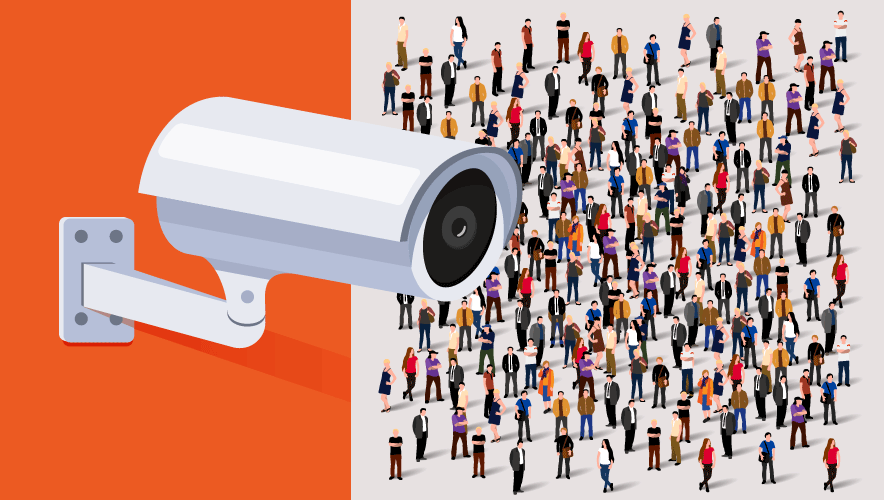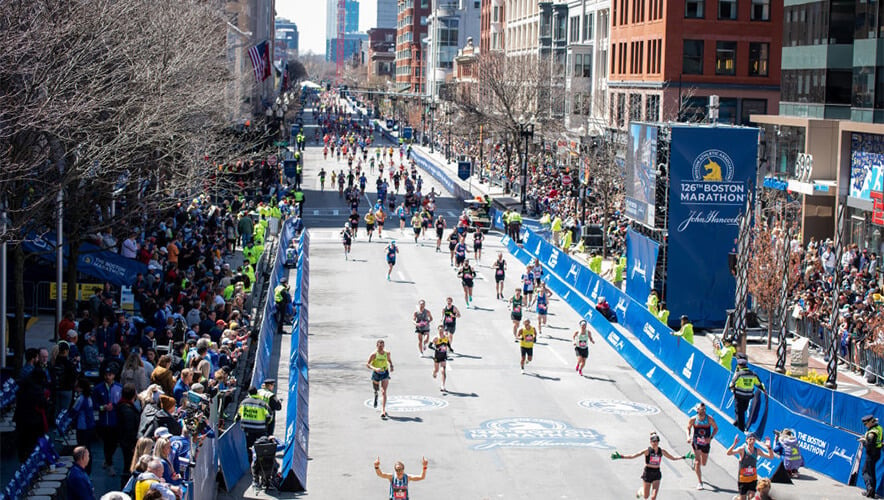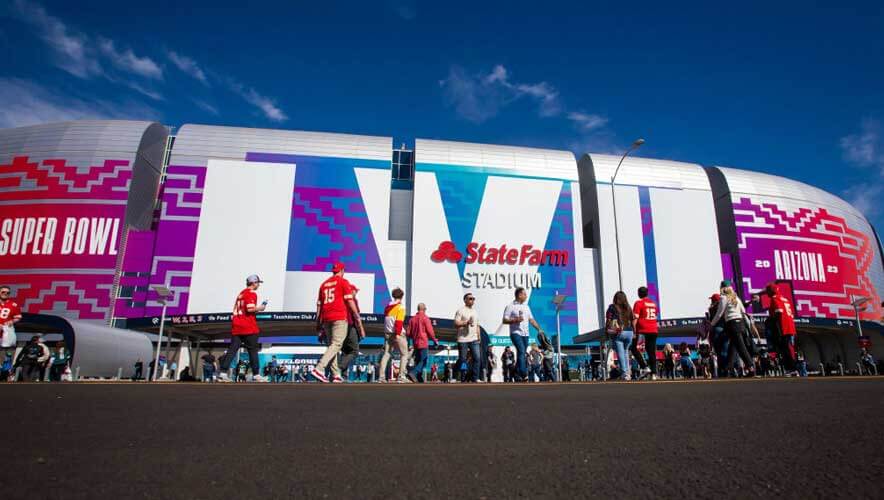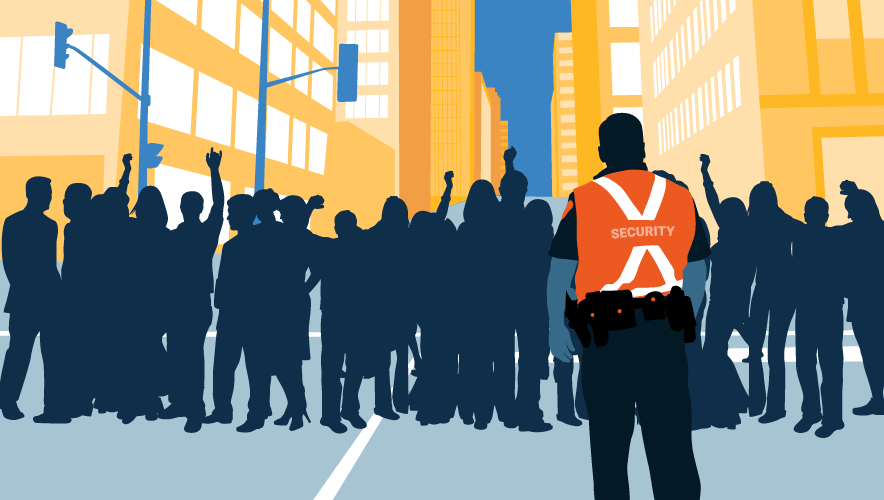Where We Are Now: A Retrospective on Event and Stadium Security
This past April marked 10 years since the tragedy of the Boston Marathon Bombing, an event that made security practitioners across the world sit up, take notice, and revisit conversations about how to better secure large-scale events.
During the past decade, changes in available technology, stadium and event venue usage, and the way law enforcement approaches sourcing video and audio data have all had major impacts on event security.
While every event may be different, and venues certainly don’t all look the same, the precautions and steps we take to ensure safety and security have shifted dramatically in recent years.
The Evolution of Stadiums and Venues
During the past few decades, we’ve seen a shift in what types of events large-scale venues play host to. Major fixed locations like stadiums are no longer just being used for the one thing they were built for: sporting events. Stadiums across the world are now hosting concert tours and charity events.
Just this year, Taylor Swift has put on the biggest stadium tour in history, selling out multi-night concerts to more than 60,000 fans each night on the American leg of “The Eras Tour” before heading to Europe in 2024.
With mega-stadium owners now confident that they can successfully sell tickets to major concerts and other events, we’ll likely see more take place in different, or smaller venues, as decision-makers maximize usage of their space.
To host large-scale events, such as an NFL game or a major concert, stadiums have evolved into small towns of their own, with municipalities building retail spaces into the blocks surrounding the stadiums. With new shops, restaurants, and activity centers surrounding stadiums, the already large perimeter of the stadium is now much more loosely defined. What’s more, if your event isn’t contained to one space—such as a marathon—defining a perimeter is that much more difficult, but critical all the same.
Defining and Protecting a Perimeter
Having a large or undefined perimeter requires security to take a more collaborative approach. For example, if you have one security program overseeing the stadium, you’ll need to determine if that program then extends into the hub surrounding it. Regardless of the nature of your perimeter, you must define it and account for the different systems being utilized by the businesses around the stadium and understand overall weaknesses and threats.
One way of beginning to define the perimeter is by identifying points of ingress and egress to the physical space. No matter how far a perimeter extends, there are going to be places where people enter and exit a facility.
For instance, while urban stadiums are generally set within surrounding neighborhoods, the stadium itself is a set space. Start with that space and take it one piece at a time—building from there and pushing the perimeter out farther from the stadium will help to build effective security layers and achieve a more proactive posture.
Large-scale events, particularly those that take place at city stadiums, add complexity to security efforts since these stadiums are embedded among restaurants, shopping, and public transit systems. In these instances, it’s clear that stadiums must collaborate with other stakeholders—local businesses, municipalities, and, of course, law enforcement—to keep people safe and secure. Fortunately, new technologies and interconnectedness between stakeholders serve to ease some of the burden these events place on existing security teams.
Integration, Collaboration, and Innovation
Technological solutions that can provide interagency system access, information sharing, and integrated communications between stadium security, law enforcement and other key partners is essential to the collaboration that’s necessary to keep stadiums and surrounding areas safe from potential threats.
In Atlanta, a program called Connect Atlanta encourages private citizens and businesses alike to register their security cameras with the Atlanta Police Department to become a larger part of a security system monitored by and accessible to Atlanta first responders. This helps solve the issue of the hubs surrounding stadiums, where the retail businesses might not be connected to the stadium security system itself, but through these collaborative programs, they can remain accessible as needed.
The precautions and steps we take to ensure safety and security have shifted dramatically.
When it comes to scattered events—like long-distance road races, cycling events or festivals—that take place over an area that lacks traditional security infrastructure or does not warrant a permanent deployment, then innovations like temporary or mobile surveillance deployments are a good option. Cities are gaining flexibility and greater situational awareness by way of solar-powered trailers equipped with network cameras, outdoor speakers, and analytics. These self-contained mobile units can be easily deployed almost anywhere across an event thereby providing valuable insights and improved security.
Managing Crowds and Traffic
Many event attendees might not realize the importance of crowd management—both in terms of overall fan experience but also spectator safety. Security systems play a key role in crowd control.
Without controlled crowd movement, a stadium that simply lets 70,000 people leave the venue all at once could create chaos. By utilizing existing security technology, stadiums can reassign staffing to the busiest areas or redirect crowds through audio announcements. Rather than have a crush of fans trying to use a single door or take the same train, these technologies can keep crowds safer and ease the workload for staff.
When analytics are integrated with outdoor video cameras or sensors, they can be used to track and alert staff to bottlenecks. For instance, if analytics detect a full parking lot or traffic congestion, staff or digital signage can be used to redirect drivers. Furthermore, speakers integrated with video surveillance, sensors and a centralized video management system can allow stadium operators to streamline operations.
For example, instead of placing security staff at each entrance or exit at a facility, IP audio can provide directions to visitors based on a set time or a triggered event—as a safeguard, video clips can be sent to staff to determine if a live response is required.
Advancements in Analytics
Ten years ago, systems, technology, and processes were much less connected, making gathering data a strenuous—and nearly impossible—task. When the Boston Marathon tragedy happened, for instance, an appointed video lieutenant had to collect as much video data as possible from individual surrounding businesses. Beyond that, law enforcement officials were tasked with gathering cell phones from visitors at the airport, and surrounding travel hubs, that had video footage of the event. It was a cumbersome and daunting task.
Today, advancements in processing power have transformed video surveillance into intelligent cameras, equipped with analytics to identify incidents, anomalies, and objects in real-time. This has been a game changer in the way large-scale events are secured, no longer relying on the human eye to manually sort through and categorize data from multiple video streams.
For example, a ballpark repeatedly experienced visitors jumping a fence to gain access to a restricted area. The venue implemented video analytics to address the problem. The edge-based application detected when trespassers crossed a predefined virtual line within camera view and immediately alerted staff to potential incidents. Simultaneously, an audio response was automatically triggered and sent out over IP speakers, warning would-be trespassers and stopping them in their tracks.
SponsoredProven Event Security & StaffingChoose Allied Universal® for experienced staff providing peace of mind. Your event, our expertise. Preferred by Clients. Loved by Guests. |
Also consider how technologies like facial authentication and recognition are contributing to both the security and operational efficiency of venues. They can be used to ensure that only authorized individuals are entering restricted areas or streamline the experience for fans by making entry faster and more efficient. Additionally, many concert and sporting venues are now enabling facial recognition in their video systems to alert security and operations teams of individuals who are on watch lists or not allowed to attend events at the venue.
Security teams are utilizing social media as a supplemental tool. By monitoring specific searches and trends, they can stay aware of any potential incidents. Having this information at their fingertips means that security teams can evaluate the legitimacy of a threat and determine how to properly proceed to protect venues and guests.
Coming Together to Prevent Tragedy
Today’s technology is also more predictive than it is forensic, meaning video can be viewed live and be analyzed immediately by AI-enabled analytics. For large-scale events, or at stadiums, this is valuable when managing real-time crowd behavior—which is an ever-increasing issue. In the past couple of years, crowd violence has been on the rise at sporting events and crowd crushes remain a major concern.
As events grow in size, they become unwieldy in terms of defining a perimeter.
As events grow in size, they become unwieldy in terms of defining a perimeter, but security planning and response must take human behavior into account. People may become excited when they see their favorite performer walk on stage, panicked if others in the crowd get too close, or angry if a referee makes a call they do not agree with. Whatever the behavior, security practitioners must have a plan to respond to it, which can include leveraging an integrated security system with video and audio deterrents that can be deployed in real-time.
When noise in the venue reaches a certain decibel level, for instance, it could automatically trigger an audio alert to play over a speaker to deter further behavior. However, determining the reason for that noise still needs to be assessed by a human who could also see the associated video. Additionally, promising new video analytics powered by artificial intelligence can help to detect the presence of weapons or aggressive behaviors, and immediately notify the security team to initiate a response.
Though human behavior remains impulsive and occasionally unpredictable, in the past 10 years we’ve developed a great deal of tools and knowledge to better combat acts of violence. Private citizens, municipalities, area stakeholders, and law enforcement alike have come together with an unprecedented level of knowledge sharing. Additionally, the information available before, during, and after incidents occur is better than ever.
We never want a repeat of a moment as tragic as the Boston Marathon Bombing, and the advancements in security technology enable us to take a more collaborative approach—combining the efforts of businesses, citizens, and security organizations—to make events safer and more secure.
Scott Dunn, senior advisor, strategic initiatives, Axis Communications, leads a high-performance team to create long-term strategies for organizations and institutions looking to elevate their security programs and business operations to achieve a vision of a smarter, safer world. Dunn also leads Axis’ liaising efforts with ASIS International and the Security Industry Association to promote educational and standards efforts to advance the physical security industry.













